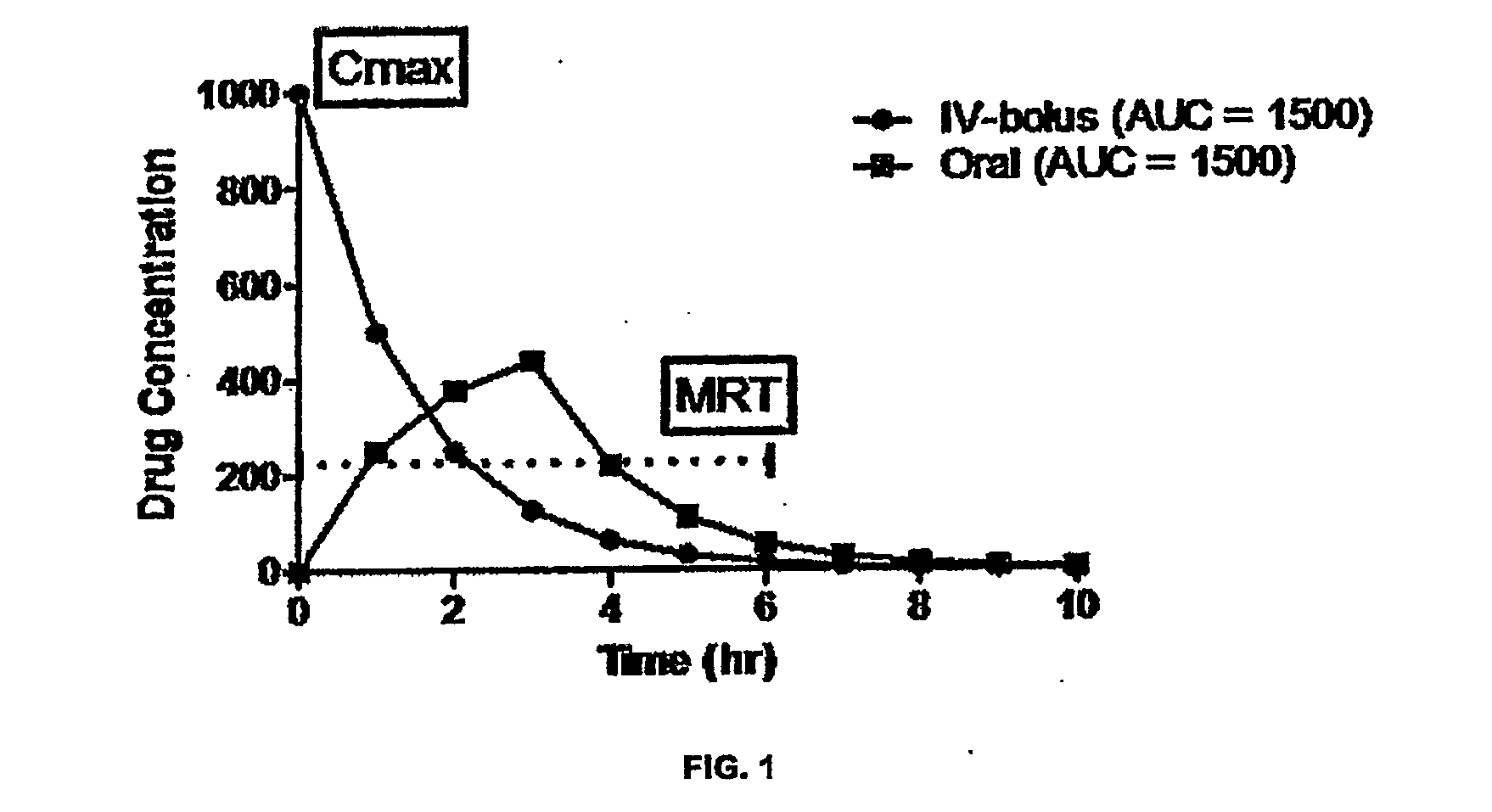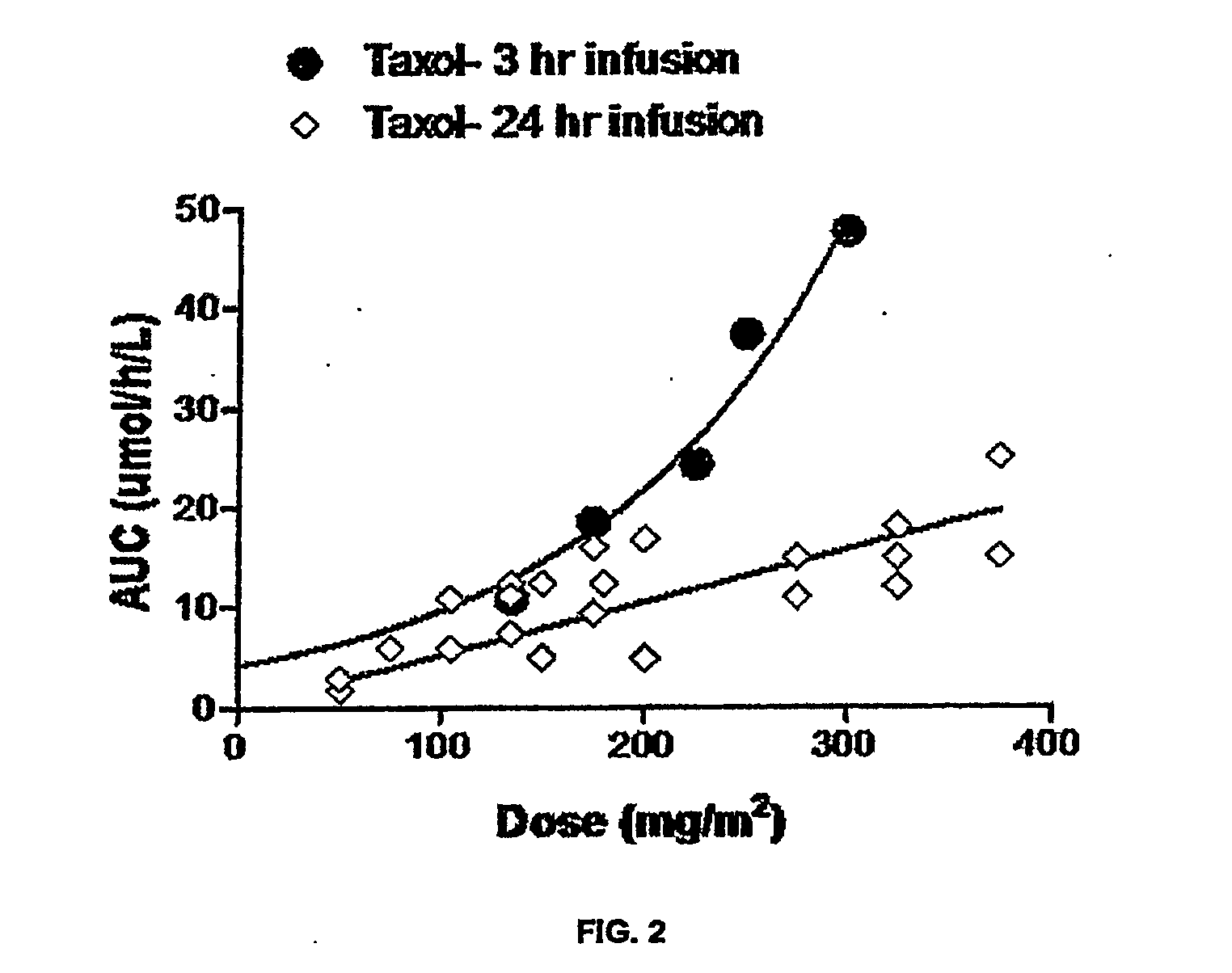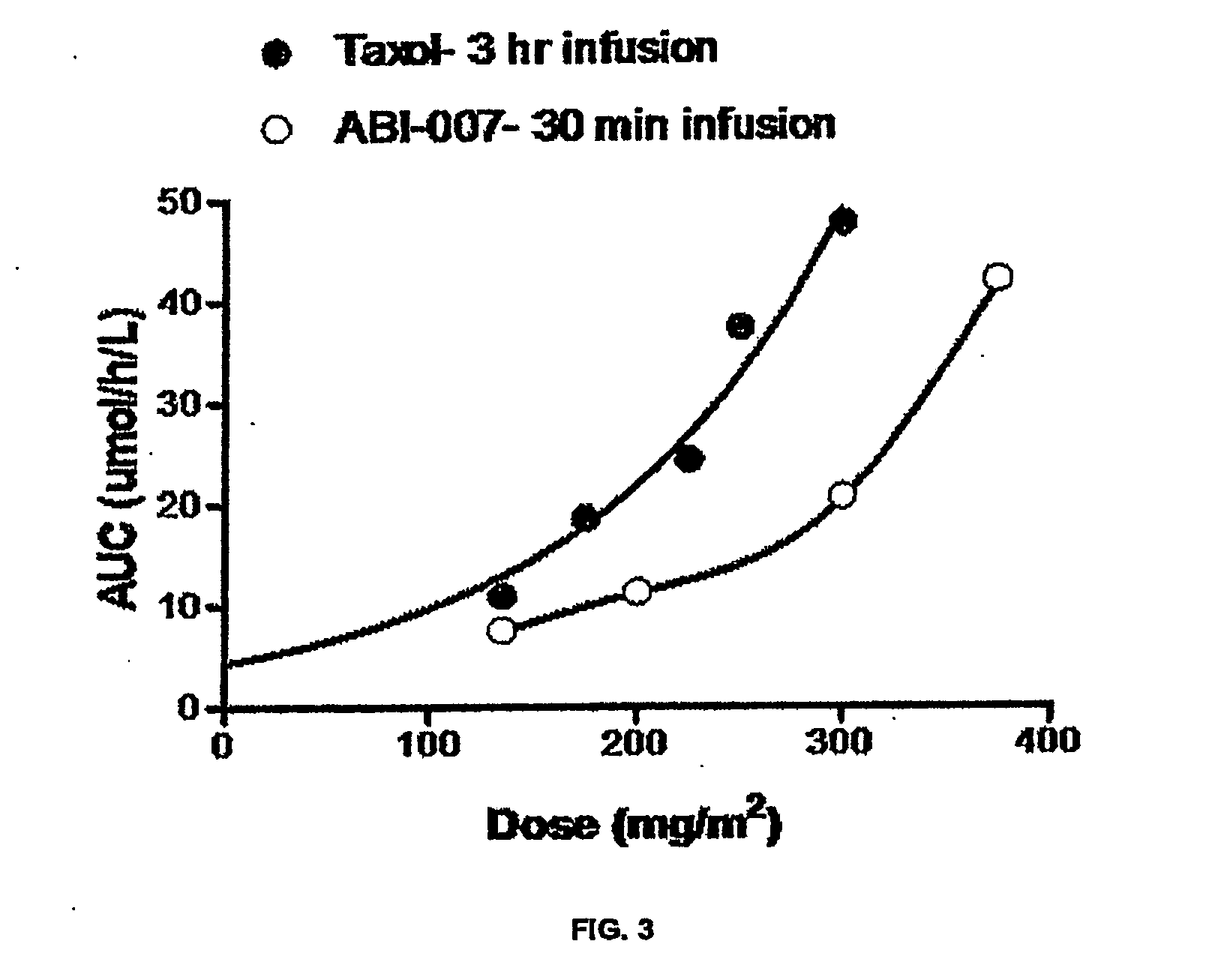Methods and compositions for therapeutic drug monitoring and dosing by point of care pharmacokinetic profiling
a pharmacokinetic profiling and drug monitoring technology, applied in the field of methods and compositions for monitoring and dosing of therapeutic drugs, can solve the problems of pd biomarker testing not pd component is often neglected, and incomplete understanding of pk is now hampering pd biomarker testing from reaching its full potential, so as to increase the individual's dosage, enhance efficacy, and reduce the effect of dosag
- Summary
- Abstract
- Description
- Claims
- Application Information
AI Technical Summary
Benefits of technology
Problems solved by technology
Method used
Image
Examples
example 1
[0061]Theoretical PK profiles are shown in FIG. 1. As shown in FIG. 1, the PK profile has two principal components—the uptake portion of the curve immediately after administration and the decay / clearance part of the curve after maximum blood concentration (Cmax). This theme varied from immediate Cmax with bolus administration to delayed Cmax with oral administration. In between are intravenous infusion, intranasal, intrabuccal, intramuscular, intraperitoneal, etc. The three main characteristics of PK profile are: Cmax (maximum blood concentration), Mean Residence Time (MRT), and AUC (Area Under Curve). AUC is commonly used to indicate blood exposure. However, two curves with similar AUCs, as depicted in FIG. 1, can have very different profiles. The intravenous bolus dosing exhibits high initial blood concentration as define by Cmax=Dose / blood volume. The oral dosing exhibits long residence time of the drug due to delayed absorption. Pharmaceutical development normally relies on expe...
example 2
[0062]To demonstrate that simply changing the intake of drug would change the PK profile, we examined PK profile of Taxol dosed at 3 hr. infusion rate and a slower 24 hr. infusion rate using published pharmacokinetic data for Taxol (Ohtsu T, Sasaki Y, Tamura T, Miyata Y, Nakanomyo H, Nishiwaki Y, Saijo N. (1995) Clinical pharmacokinetics and pharmacodynamics of paclitaxel: a 3-hour infusion versus a 24-hour infusion. Clin Cancer Res. 1:599-606.; Wiemik P H, Schwartz E L, Einzig A, Strauman J J, Lipton R B, Dutcher J R (1987) Phase I trial of taxol given as a 24-hour infusion every 21 days: responses observed in metastatic melanoma. J Clin Oncol. 5:1232-9.; Tamura T, Sasaki Y, Eguchi K, Shinkai T, Ohe Y, Nishio M, Kunikane H, Arioka H, Karato A, Omatsu H, et al. (1994) Phase I and pharmacokinetic study of paclitaxel by 24-hour intravenous infusion. Jpn J Cancer Res. 85:1057-62.; Tamura T, Sasaki Y, Nishiwaki Y, Saijo N. (1995) Phase I study of paclitaxel by three-hour infusion: hypot...
example 3
[0063]To demonstrate that an increase in tissue distribution rate and therefore a decrease in the rate of drug accumulation in blood would alter the PK profile, we examined the PK profile of Abraxane versus Taxol. As shown in FIG. 3, paclitaxel formulated as Abraxane (ABI-007) exhibited lower AUC than paclitaxel formulated as Taxol (Cremophor EL). The increase in AUC with faster uptake / infusion (30 min infusion for Abraxane versus 3 hr infusion for Taxol) was not observed. Abraxane® (albumin-bound paclitaxel, Abraxis BioSciences)—FDA approval in 2005 for metastatic breast cancer. It is known that Abraxane formulation resulted in faster tissue penetration—a property that is known to varied from individual to individual dependent on their level of paclitaxel binding proteins and others. This again exemplified that PK profiling—the use of totality of PK data—is more suitable for therapeutic drug monitoring. We found the same with other Cremophor free formulation such as Genexol (FIG. 4...
PUM
| Property | Measurement | Unit |
|---|---|---|
| time | aaaaa | aaaaa |
| time | aaaaa | aaaaa |
| time | aaaaa | aaaaa |
Abstract
Description
Claims
Application Information
 Login to View More
Login to View More - R&D
- Intellectual Property
- Life Sciences
- Materials
- Tech Scout
- Unparalleled Data Quality
- Higher Quality Content
- 60% Fewer Hallucinations
Browse by: Latest US Patents, China's latest patents, Technical Efficacy Thesaurus, Application Domain, Technology Topic, Popular Technical Reports.
© 2025 PatSnap. All rights reserved.Legal|Privacy policy|Modern Slavery Act Transparency Statement|Sitemap|About US| Contact US: help@patsnap.com



